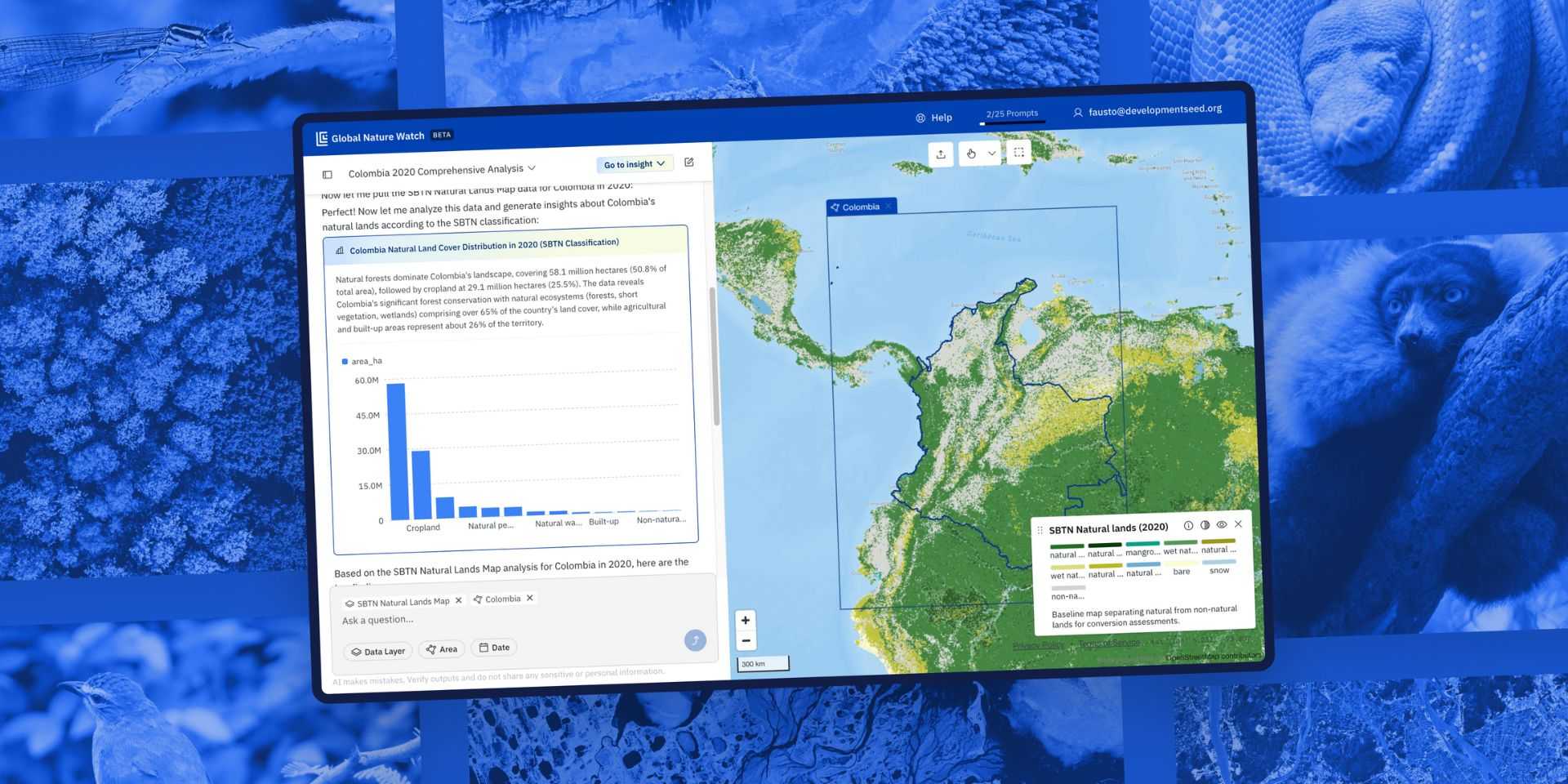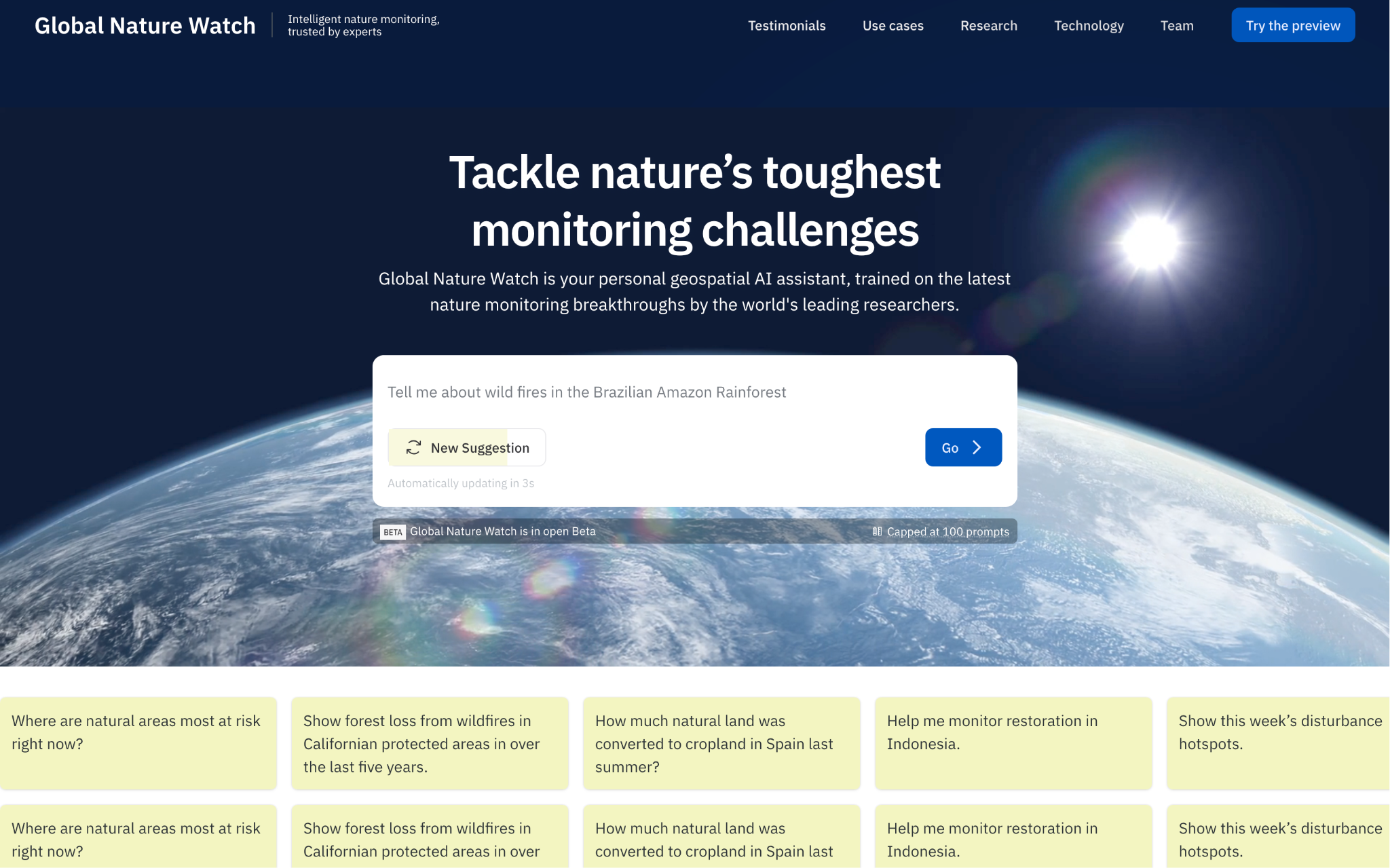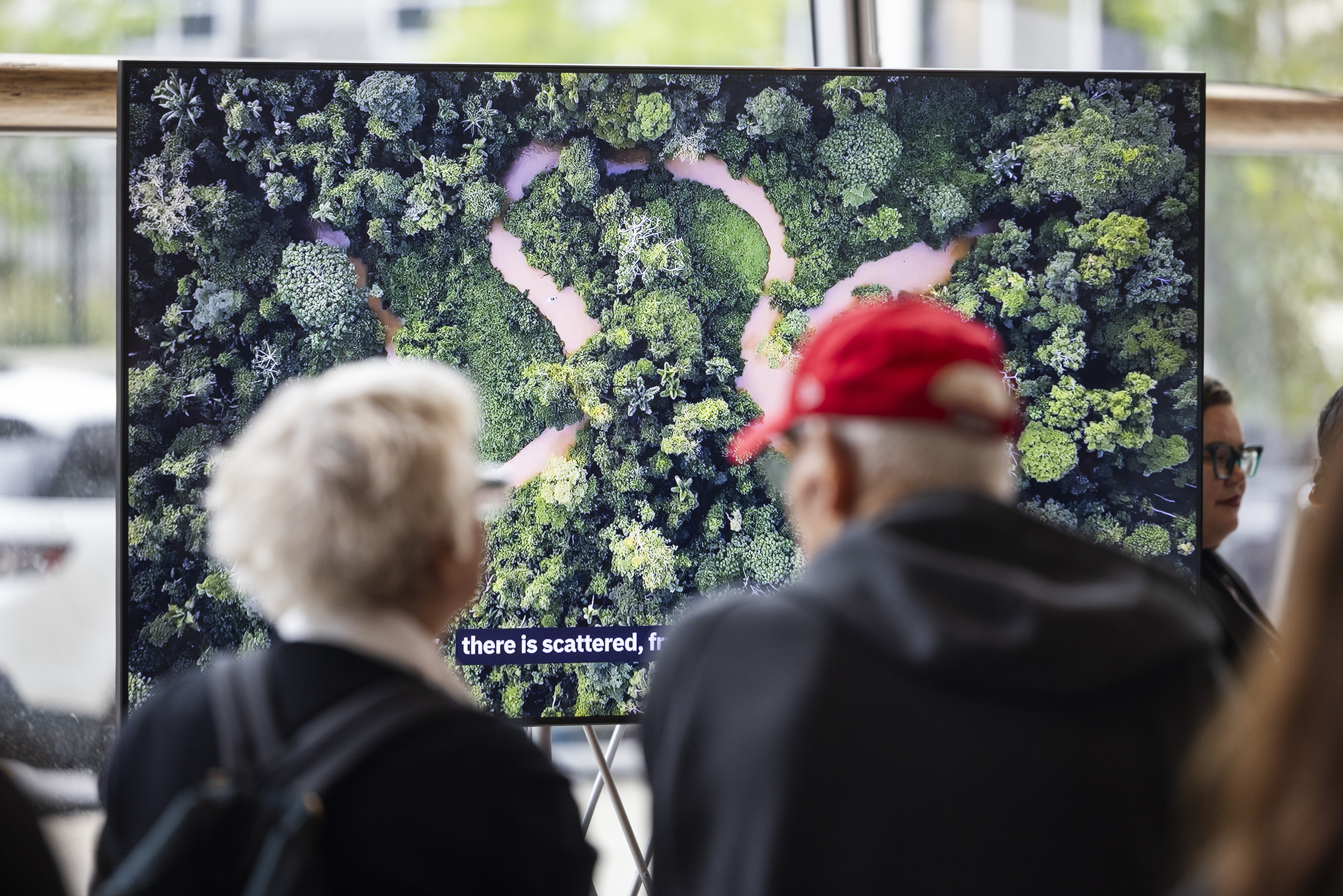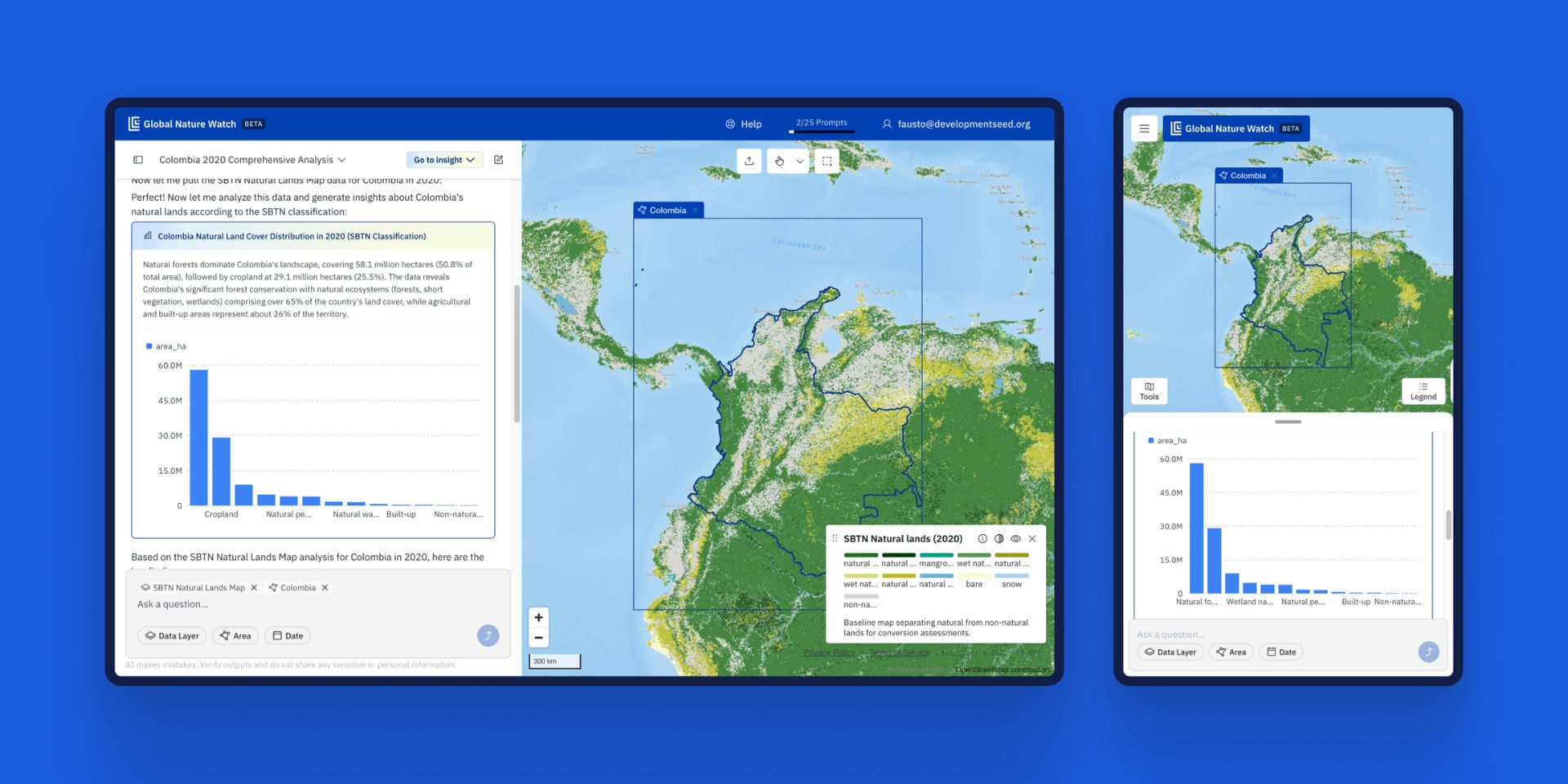Global Nature Watch is a new frontier in planetary intelligence, developed with Land & Carbon Lab – an initiative convened by World Resources Institute and Bezos Earth Fund. Built with data from Global Forest Watch and Land & Carbon Lab, it combines 80+ peer-reviewed datasets into a single, open platform that anyone can use. With plain-language questions and an intuitive map interface, users can explore how forests, grasslands, wetlands, croplands, pastures, and carbon fluxes are changing — all backed by trusted science.

Global Nature Watch is here: an open, AI-powered monitoring platform that makes environmental intelligence accessible to everyone. Built with Land & Carbon Lab – an initiative convened by World Resources Institute and Bezos Earth Fund, it brings five years of science and over 80 datasets into a simple chat interface that provides plain language answers, maps, and more.
As Land & Carbon Lab Director Craig Mills describes, this collaboration connects decades of monitoring research with new AI tools that make planetary intelligence usable for everyone.
Until now, much of this knowledge has been difficult to access, as data is abundant but often hard to use. Global Nature Watch lowers those barriers. It is one of the first practical applications of GeoAgents, systems that can interpret a user’s question, identify the right data, run analyses, and return clear insights.
The result is that policymakers, NGOs, communities, researchers, and businesses can ask questions in plain language, across 170 languages, and receive authoritative answers with maps, charts, and context. For the first time, land monitoring is expanding beyond forests to all ecosystems, with the potential to change how people everywhere act on nature and climate.
Built for action, not just access
Global Nature Watch adds to the deep research and data from Land & Carbon Lab and Global Forest Watch, including Global Forest Watch’s open monitoring that has reached millions of users worldwide. This new system extends that reach across all land ecosystems.
Our role has been to design and engineer the underlying system. We worked with the Land & Carbon Lab team to ensure the platform is intuitive and reliable at launch, while remaining open and adaptable for the future. Our goal throughout is to help Land & Carbon Lab put trusted planetary data directly into the hands of those who need it most. Here’s more on how we built Global Nature Watch.
Global Nature Watch is launching as an early release through a phased rollout. It is already powerful and usable today, and will continue to be refined with more data, features, and user feedback.

The Global Nature Watch landing page invites users to ask questions about environmental change and explore the latest monitoring data from leading scientists.
What Global Nature Watch does
- Conversational monitoring: “Which regions in India lost the most forest cover during COVID?” or “What are the trends in grasslands in Argentina?” — the system interprets, selects the right dataset, and generates clear insights.
- Grounded in curated science: all outputs are tied to peer-reviewed datasets from Land & Carbon Lab and partners, avoiding hallucinations and ensuring reproducibility.
- Multilingual intelligence: questions in 170+ languages, expanding reach far beyond technical audiences.
- Transparent evaluation: automated test queries and open evaluation frameworks keep performance accountable and improvable.
Impact in practice
Indigenous communities in the Philippines are combining Land & Carbon Lab data with LandMark data to defend ancestral territories — contributing to the first-ever formal recognition of their land rights.
Sicredi, a major Brazilian cooperative bank, is using grassland monitoring to design finance products that support smallholder farmers in restoring degraded pastures.
Regional leaders in Colombia are drawing on Land & Carbon Lab data to guide bioeconomy planning in the Amazon, filling gaps in national datasets and supporting policy decisions.
These stories, highlighted at the Global Nature Watch launch, show what happens when planetary-scale data becomes accessible: better decisions, stronger rights, smarter investments, and faster action.

Partners highlighted how open, peer-reviewed monitoring data from Land & Carbon Lab are already informing conservation, finance, and policy decisions around the world. Credit: Jim LoScalzo
Our take on AI and agents for Earth
We see AI as a way to bridge science and data exploration with insights and decision-making without sacrificing rigor. Global Nature Watch is one of the first operational GeoAgents, systems that can understand a user’s intent, identify the right data, run analyses, and deliver clear insights.
By relying on AI predominantly for orchestrating rather than generating content, Global Nature Watch avoids the pitfalls of generative AI while opening up new possibilities for curiosity-led exploration. Its reasoning is grounded in peer-reviewed datasets and deterministic workflows, ensuring reproducible and reliable outputs. Policymakers, NGOs, and communities can now pose questions they may never have been able to ask before, and receive authoritative answers in seconds.
This approach builds directly on what we see as the great retooling of geospatial data. Cloud-native standards, such as STAC and GeoParquet, and scalable APIs, like eoAPI, along with fast rendering pipelines like TiTiler, form the invisible infrastructure that enables AI systems to work reliably with planetary-scale datasets.
For us, this is what responsible AI looks like: amplifying science, widening access, and doing it transparently.

The Global Nature Watch interface combines maps and charts, letting users analyze changes in land cover, vegetation, and ecosystems across any region.
Open and Growing
This is just the start. More datasets — including global carbon flux at 30 m resolution — are on the way. And as people use the tool, their feedback will shape what comes next. The open-ended nature of conversational interfaces represents a new frontier of understanding user needs. We will be able to learn not only from formal feedback, but also from how people interact with Global Nature Watch in practice.
Global Nature Watch is open, free, and collaborative - as is all the data and software behind it. We invite you to explore it, share your experience, and help build the future of monitoring.
Explore the platform (request access): https://www.globalnaturewatch.org/
Global Nature Watch shows what becomes possible when world-class science meets next-generation engineering. It stands on the foundation of open standards and cloud-native systems, taking the next step into agentic, AI-powered monitoring.
Our global team worked side by side with Land & Carbon Lab to bring this vision to life. And we’re ready for the next challenge. If your organization is looking to solve the hardest problems at the intersection of AI and Earth data, let’s build together.
What we're doing.
Latest